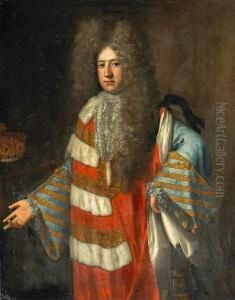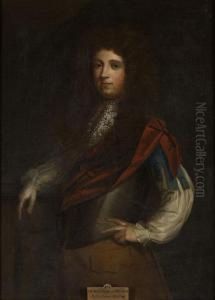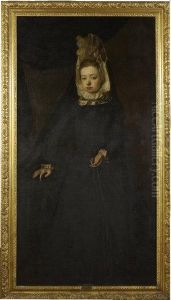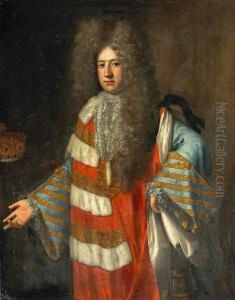Garret Morphy Paintings
Garret Morphy, also known as Garrett or Gerard Morphy, was an Irish portrait painter whose life and work are somewhat obscure but remain of interest in the study of Irish art history. Morphy was born around 1655, likely in Dublin, Ireland. There is little documentation about his early life and training, but it is believed that he may have been a pupil of the Dutch painter Jacob Toorenvliet in Leiden, based on stylistic similarities between their works.
Morphy's career began to take shape in Ireland during the latter half of the 17th century, a time when the country was undergoing significant political and social changes. Despite these upheavals, Morphy established himself as a portraitist, painting members of the Irish gentry and aristocracy. His portraits are characterized by their clarity, careful attention to detail, and the rich attire of the subjects, reflecting the conventions of the baroque style of the period.
There is evidence to suggest that Morphy spent time in Spain, which was unusual for Irish artists of the period. It was during his time in Spain that he is believed to have developed a more sophisticated approach to painting, possibly influenced by Spanish artists of the time. Upon returning to Ireland, he brought with him a continental flair that set his work apart from his contemporaries.
The exact date of Morphy's death is not known, but it is generally accepted that he died around 1716. His legacy is somewhat limited due to the scarcity of surviving works that can be definitively attributed to him. However, the portraits that are attributed to Morphy provide a valuable insight into the faces and fashions of Ireland's elite during a turbulent period in the country's history. Although not as widely recognized as other portraitists of the era, Morphy's contribution to Irish art and his role as a conduit for European influences in Irish portraiture are acknowledged by art historians today.





